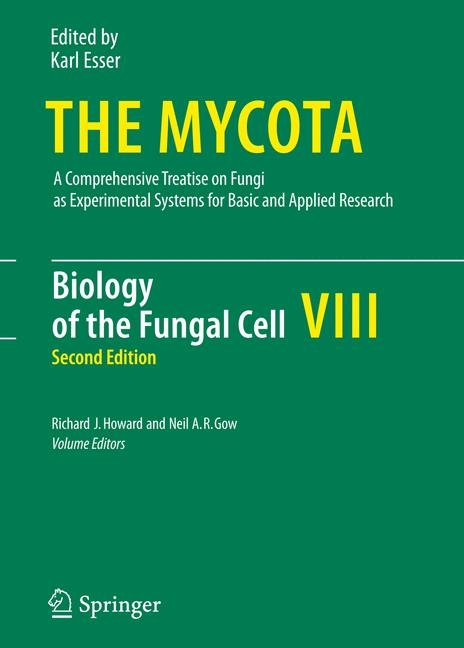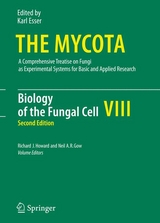Biology of the Fungal Cell
Springer Berlin (Verlag)
978-3-540-70615-1 (ISBN)
- Titel erscheint in neuer Auflage
- Artikel merken
1 The Endomembrane System of the Fungal Cell
Timothy M. Bourett, Steven W. James and Richard J. Howard 2 Motile Tubular Vacuole Systems
Anne E. Ashford and William G. Allaway 3 The Fungal Woronin Body
Tejaswini Dhavale and Gregory Jedd 4 A Molecular and Genomic View of the Fungal Cell Wall
Frans M. Klis, Arthur F.J. Ram and Piet W.J. De Groot 5 The Cytoskeleton and Polarized Growth of Filamentous Fungi
Reinhard Fischer 6 Polarised Growth in Fungi
Peter Sudbery and Helen Court 7 Signal Transduction and Morphogenesis in Candida albicans
Alistair J.P. Brown, Silvia Argimón and Neil A.R. Gow 8 Mating in Candida albicans and Related Species
David R. Soll 9 Ions Regulate Spore Attachment, Germination, and Fungal Growth
Brian D Shaw and Harvey C. Hoch 10 Biomechanics of Invasive Hyphal Growth
Nicholas P. Money 11 Cell Biology of Fungal and Oomycete Infection of Plants
Adrienne R. Hardham 12 Fair Trade in the Underworld: the Ectomycorrhizal Symbiosis
Francis Martin 13 Network Organisation of Mycelial Fungi
Mark Fricker, Lynne Boddy and Daniel Bebber
| Erscheint lt. Verlag | 28.6.2007 |
|---|---|
| Reihe/Serie | The Mycota ; 8 |
| Zusatzinfo | XX, 341 p. |
| Verlagsort | Berlin |
| Sprache | englisch |
| Maße | 178 x 254 mm |
| Gewicht | 960 g |
| Themenwelt | Naturwissenschaften ► Biologie ► Mikrobiologie / Immunologie |
| Naturwissenschaften ► Biologie ► Zellbiologie | |
| Schlagworte | Cell Biology • cell structure • Cytoskeleton • Eukaryota • eukaryote • Fungi • Morphogenesis • Mycology • Mykologie • pathogen • Pathogene • Pilze • signal transduction • Zellbiologie • Zellstruktur |
| ISBN-10 | 3-540-70615-1 / 3540706151 |
| ISBN-13 | 978-3-540-70615-1 / 9783540706151 |
| Zustand | Neuware |
| Haben Sie eine Frage zum Produkt? |
aus dem Bereich




